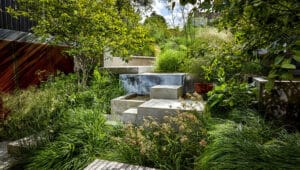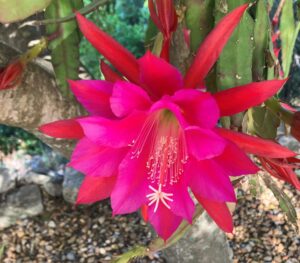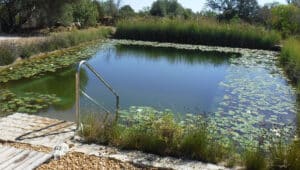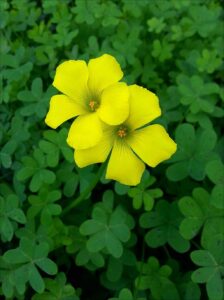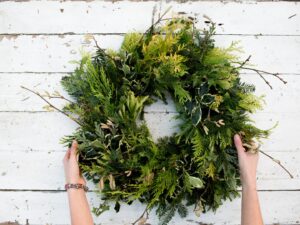By STUART MERELIE features@algarveresident.com
Stuart Merelie, Landscaper, Ecological researcher and Permaculture fanatic, shares his passion for correct and sustainable landscaping in the Algarve and is the Algarve Resident’s permanent garden and landscaping correspondent. This is part in a series of 24, exploring Permaculture and its importance and uses in today’s world.
Nothing gets thrown away at Quinta Stuart. I would say I am very green in recycling a set of broken excavator tracks into a square foot flowerbed.
I guess I could have used the broken gearbox as a flower pot, but I am still smarting from buying a new set of tracks AND a reconditioned gear box for my old Mercedes – both on the same day just before Christmas.
I opened the door of the campervan on New Year’s morning to find:
a) We were parked on a verge in the middle of Albufeira.
b) A young girl with one shoe in her hand was howling her head off. I think she had just finished drinking and wanted to borrow 50 cents to make a call as she had lost her bag and phone on the beach. I smiled and with my new resolution told her to run away (New Year’s resolutions don’t always involve being nice).
c) My girlfriend had lost her phone, presumed missing in action on the same beach. Big search, obviously stolen, evidently part of an international ring of ‘New Year’s Eve Phone Stealing Ring’. I found this amusing as it is normally me who does such things.
Strangely, the phone turned up a couple of hours later in a saucepan in the campervan cupboards!
Following nature
People need gardens, and gardens need people. The garden shouldn’t be designed as a museum for plants, or as a decoration attached to the house. It should be somewhere to feel comfortable. A sustainable gardener will aim to build his garden which works because it is designed by observing nature, going with the flow. What I often recommend to my clients, is to work with what you have. A rubble filled plot next to a new house may be perfect for a well drained rockery for hardy cactus.
A neglected garden full of weeds and overgrown by only a few plants has plenty to tell us about soil condition – don’t make your first response to clear the lot. It shows how healthy the soil is (more weeds show a healthier soil) and it shows what plants have survived a summer or two without irrigation.
Think about the spare spaces you have for planting in your garden. Shade loving plants love shady corners, Bougainvilleas and Plumbego love full sun. It sounds obvious but you would be astounded how many people ignore common sense and practice serious ‘plonk-a-plant’. The only result of this is too many trips to the garden centre or the classic statement – ‘we haven’t got green fingers’. Follow nature, accept its limitations and you will get a good garden for minimal effort.
The importance of edges
Have you ever noticed where plants, especially weeds, grow best? Against walls, under fences, on boundaries. It means that nothing stands alone, we all thrive by interdependence with our neighbours. The most fruitful places in nature are where different ecologies meet. The edge of a woodland combines sun and shade, shelter and open. Many more plants will thrive in your garden if there is more edge. There is something very dead about straight lines in a garden. The flowing curves of nature, hills and hollows invite many more variations in light, shade, wind resistance and privacy, and consequently for a great variety of yield, for food or flower.
The diversity of connections
Everything is connected. We need to be aware of the way all the elements in our garden work together. Monoculture in landscaping is rarely successful. How many gaps are there in Myoporum latae hedges or dead patches in lines of Rosemary or Lavender. Nature does not throw things in a single species in a straight line. The trick is to maximise connections in a system to make it stronger.
In modern life, we call it networking, in the garden, companion planting. For example leeks and Marigolds are well known for companion planting, as they exude chemicals from their roots or aerial parts that suppress or repel pests and protect neighbouring plants. Companion planting also exists in a physical way. For example, tall-growing, sun-loving plants may share space with lower-growing, shade-tolerant species, resulting in higher total yields from the land. This is called spatial interaction, and can also yield pest control benefits, for example, the presence of the prickly vines is said to discourage raccoons from ravaging sweet corn.
Another type of companion planting is called nurse cropping, where tall or dense-canopied plants may protect more vulnerable plants through shading or by providing a windbreak. For example, oats have long been used to help establish alfalfa and other forages by supplanting the more competitive weeds that would otherwise grow in their place. In many instances, nurse cropping is simply another form of physical-spatial interaction. I tend to believe in random planting and watch the results, pluck the losers and tend the winners just like the beachcomers on Albufeira beach on New Year ’s Day.
With over 23 years experience in garden design and construction, Stuart is available for design, consultation and construction of all types of landscaping. He lives near Estoi and is developing a low energy farm which will soon be open as a hostel for likeminded souls with residential courses in low carbon construction and lifestyle. For enquiries, please contact Stuart on (00351) 917 814 261 or send an email to gardening@algarveresident.com


